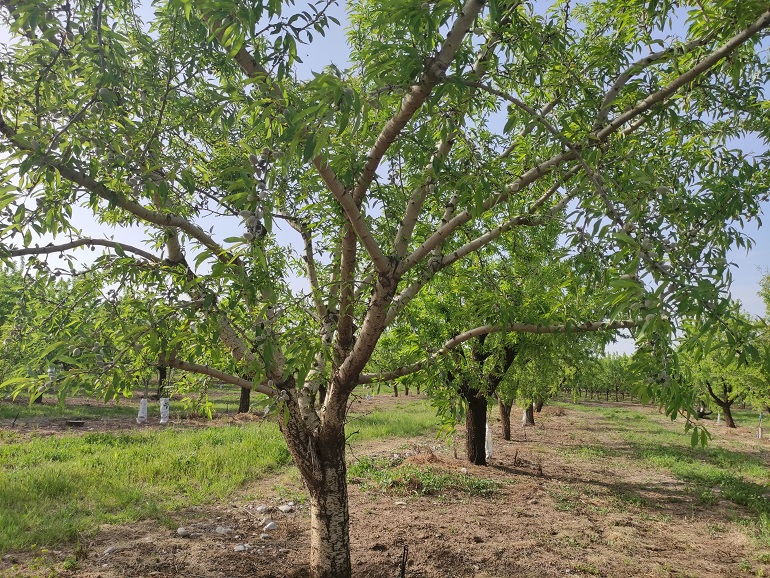Almond Tree Pruning

This post is also available in:
This post is also available in:
![]() Español (Spanish)
Español (Spanish) ![]() Français (French)
Français (French) ![]() Deutsch (German)
Deutsch (German) ![]() Nederlands (Dutch)
Nederlands (Dutch) ![]() العربية (Arabic)
العربية (Arabic) ![]() Türkçe (Turkish)
Türkçe (Turkish) ![]() 简体中文 (Chinese (Simplified))
简体中文 (Chinese (Simplified)) ![]() Italiano (Italian)
Italiano (Italian) ![]() Português (Portuguese (Brazil))
Português (Portuguese (Brazil)) ![]() polski (Polish)
polski (Polish)
How to prune Almond Trees
As it happens in most fruit trees, we prune (or “train”) young almond trees during their first or second year in order to determine their shape (crown skeleton). The shape is very important and can affect production quantity, quality and ease of harvesting or other farming activities. On the other hand, we prune mature almond trees in order to maintain their shape and open up the inner part of the tree, so that aeration and sunlight penetration will be improved. We also prune mature almond trees in order to remove broken, weak or diseased branches, and of course get rid of old wood, water sprouts or suckers. All the previous operations promote fruit production in the long term. The frequency of mature tree pruning ranges from once a year to once every two years.
The most common shape of almond crown is vase. Vase is consisted of 3-4 main branches, which are formed at a height of 28-31 inches (70-80 cm) above the ground and have 50 to 60 degrees angle with the trunk, so that mechanical harvesting will be facilitated. Each branch has two secondary branches. The first is formed at an average distance of 16 inches (40 cm) from the base and the second at a distance of 24-31 inches (60-80 cm) and at the opposite direction to the first. In general, the tree crown configuration must be completed in the minimum possible time and with minor operations.
The almond tree usually comes into light fruition much sooner than other trees do. If the tree crown is properly determined from the beginning, the tree will continue to increase in size and give greater production every year for many years. The almond tree bears fruit in shoots that have a productive life of about 3-4 years. Consequently, pruning aims at renewing the fruitful wood and the formation of new fruitful branches to replace those who have ceased to be productive. As a rule of thumb, 20% of the canopy should be pruned back each year in order to allow new wood to grow. Our aim is to have at any time numerous 1 year old shoots of 14-20 inches (35-52 cm), as these shoots will normally produce nuts for the next 4 years.
Old and weak trees, lacking vigorous vegetation, can usually be strengthened after excessive pruning. However, if the pruning is severe, there will be an increase in growth of water sprouts on the following year. In general, water sprouts should be removed, because they often shade the fruit bearing parts of the tree, which results in lower production.
You can enrich this article by leaving a comment or photo of your almond tree pruning methods.
2.) How to grow an Almond Tree from seed
3.) Growing Almond Trees for Profit
4.) Almond Tree Climate Requirements
5.) Almond Tree Soil Requirements & Preparation
8.) Planting Almond Trees – Number of Almonds Trees per hectare and acre
9.) Almond Tree Pruning
10.) Almond Tree Water Requirements
11.) Almond Tree Fertilization
12.) Almond Tree Harvest & Yield
13.) Almond Tree Pests and Diseases
Do you have experience in Almond Tree cultivation? Please share your experience, methods and practices in the comments below. All the content you add will be soon reviewed by our agronomists. Once approved, it will be added to Wikifarmer.com and it will influence positively thousands of new and experienced farmers across the world.









































































